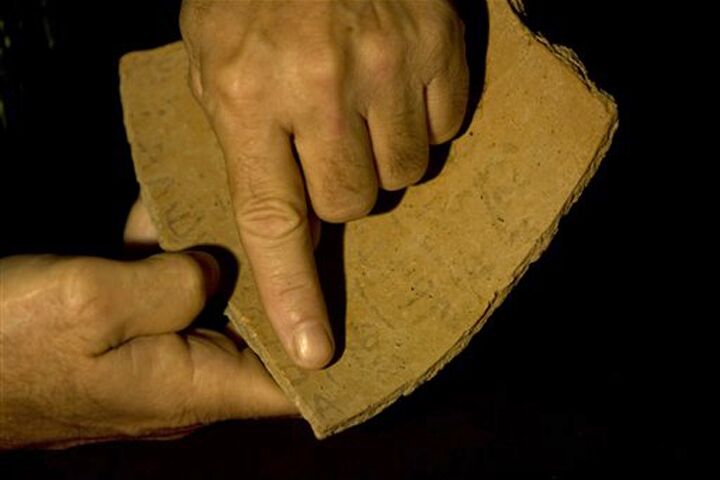
The Oldest Known Hebrew Inscription Confirms Biblical Record
A pottery shard from the remains of a town dating from the 10th century b.c. has been proven to be written in ancient Hebrew—making it the oldest known Hebrew inscription. Prof. Gershon Galil of the Department of Biblical Studies at the University of Haifa translated the text, proving that the Israel of that time was a major nation—not the backwoods tribe that some biblical scholars say it was.
“It can now be maintained that it was highly reasonable that during the 10th century bce, during the reign of King David, there were scribes in Israel who were able to write literary texts and complex historiographies such as the books of Judges and Samuel,” said Galil.
The shard was discovered in an excavation led by Prof. Yosef Garfinkel inside a fortified town on a hilltop near the valley of Elah, where David battled Goliath. The town has a 30-foot-wide gate, a central fortress, and a wall running 2,300 feet in circumference. These fortifications are too elaborate to have been constructed by the city’s inhabitants, Garfinkel says. They would have required the resources of an organized kingdom, like that of King David. At the time Garfinkel released his conclusions, Associated Press wrote: “[T]he fortified settlement where the writing was found contains indications that a powerful Israelite kingdom existed near Jerusalem in David’s time, says Garfinkel” (Oct. 30, 2008).
“The fortification required 200,000 tons of stone and probably 10 years to build,” Garfinkel said.
Before the shard was translated, archaeologist Aren Maier said it would be “one of the most important texts, without a doubt, in the corpus of Hebrew inscriptions,” if it could be proven to be Hebrew.
Galil concluded that the text was indeed Hebrew as it uses verbs found only in the Hebrew language, and it contains material only relevant to an Israelite culture.
“This text is a social statement, relating to slaves, widows and orphans,” he said. “It uses verbs that were characteristic of Hebrew, such as asah (did) and avad (worked), which were rarely used in other regional languages. Particular words that appear in the text, such as almana (widow) are specific to Hebrew and are written differently in other local languages.”
“The content itself was also unfamiliar to all the cultures in the region besides the Hebrew society,” he continued. “The present inscription provides social elements similar to those found in the biblical prophecies and very different from prophecies written by other cultures postulating glorification of the gods and taking care of their physical needs.”
Galil translated the text as saying:
you shall not do [it], but worship the [Lord].
Judge the sla[ve] and the wid[ow] / Judge the orph[an] [and] the stranger. [Pl]ead for the infant / plead for the po[or and] the widow. Rehabilitate [the poor] at the hands of the king. Protect the po[or and] the slave / [supp]ort the stranger.
He noted that although the text was similar to several biblical passages (Isaiah 1:17; Psalm 72:3; Exodus 23:3), it does not appear to be a copy of any biblical text.
Nevertheless, this is yet another piece of evidence showing the Bible’s history of Israel is true, and modern revisionists’ histories are false. For more proof of the biblical account, see our article “Did King David Conquer Jerusalem Using This Tunnel?”
